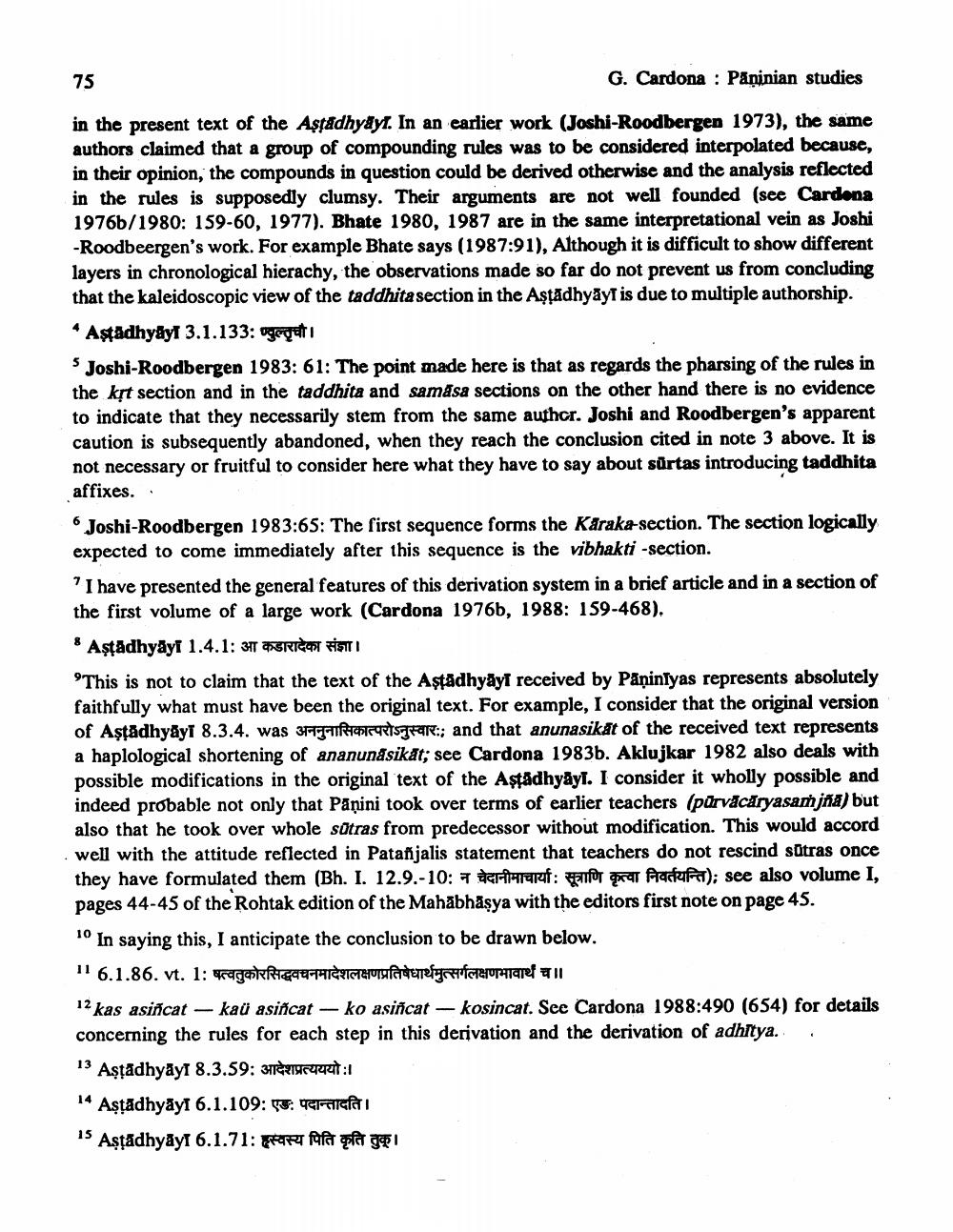________________
75
G. Cardona : Påninian studies
in the present text of the Astadhyayf. In an earlier work (Joshi-Roodbergen 1973), the same authors claimed that a group of compounding rules was to be considered interpolated because, in their opinion, the compounds in question could be derived otherwise and the analysis reflected in the rules is supposedly clumsy. Their arguments are not well founded (see Cardona 1976b/1980: 159-60, 1977). Bhate 1980, 1987 are in the same interpretational vein as Joshi -Roodbeergen's work. For example Bhate says (1987:91), Although it is difficult to show different layers in chronological hierachy, the observations made so far do not prevent us from concluding that the kaleidoscopic view of the taddhita section in the Aşțădhyāyf is due to multiple authorship.
Astadhyayr 3.1.133: ugegati 5 Joshi-Roodbergen 1983: 61: The point made here is that as regards the pharsing of the rules in the kịt section and in the taddhita and samāsa sections on the other hand there is no evidence to indicate that they necessarily stem from the same authcr. Joshi and Roodbergen's apparent caution is subsequently abandoned, when they reach the conclusion cited in note 3 above. It is not necessary or fruitful to consider here what they have to say about sûrtas introducing taddhita affixes..
Joshi-Roodbergen 1983:65: The first sequence forms the Karaka-section. The section logically expected to come immediately after this sequence is the vibhakti -section. 'I have presented the general features of this derivation system in a brief article and in a section of the first volume of a large work (Cardona 1976b, 1988: 159-468). 8 Astādhyayf 1.4.1: 3T ERIC FISITI 'This is not to claim that the text of the Astädhyāyi received by Pāņiniyas represents absolutely faithfully what must have been the original text. For example, I consider that the original version of Aşțădhyāyi 8.3.4. was 37991 IRISTER:; and that anunasikat of the received text represents a haplological shortening of ananunåsikat; see Cardona 1983b. Aklujkar 1982 also deals with possible modifications in the original text of the Astädhyay. I consider it wholly possible and indeed probable not only that Pāṇini took over terms of earlier teachers (pārvācāryasam jña) but also that he took over whole sûtras from predecessor without modification. This would accord well with the attitude reflected in Patañjalis statement that teachers do not rescind sätras once they have formulated them (Bh. I. 12.9.-10: 7 entrarf: enfor anar Asturt)see also volume I, pages 44-45 of the Rohtak edition of the Mahābhāşya with the editors first note on page 45. 10 In saying this, I anticipate the conclusion to be drawn below. 11 6.1.86. vt. 1: KagamiTTAISAH derfynaurarare I 12 kas asincat - kaü asiñcat - ko asincat - kosincat. See Cardona 1988:490 (654) for details concerning the rules for each step in this derivation and the derivation of adhitya. . 13 Aștadhyay 8.3.59: Beyrut :1 14 Aștādhyāyi 6.1.109: 5: Clefai 15 Așțădhyâyr 6.1.71: Ari Aa fat gi




